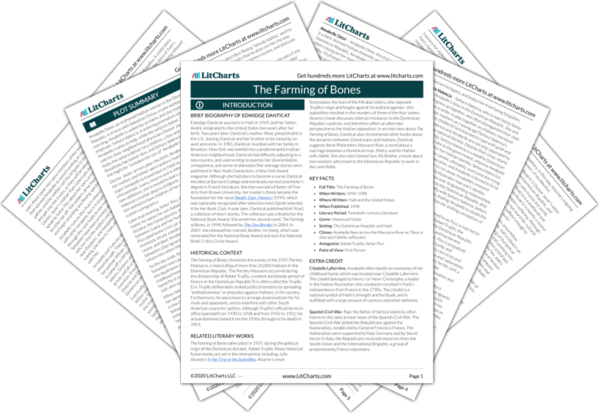The señora, like Amabelle, also recalls childhood scenes, offering another example of how memory safeguards the past against being forgotten. Memory’s protective abilities are further proven by the señora’s words about her mother: the memory of her mother was powerful enough to linger beyond her death. It’s also significant that Amabelle’s initial declaration of self-possession was in her native language, a symbolic affirmation of her Haitian identity. Even as a child, Amabelle connected her sense of self—and her sense of belonging—to Haitian culture.
